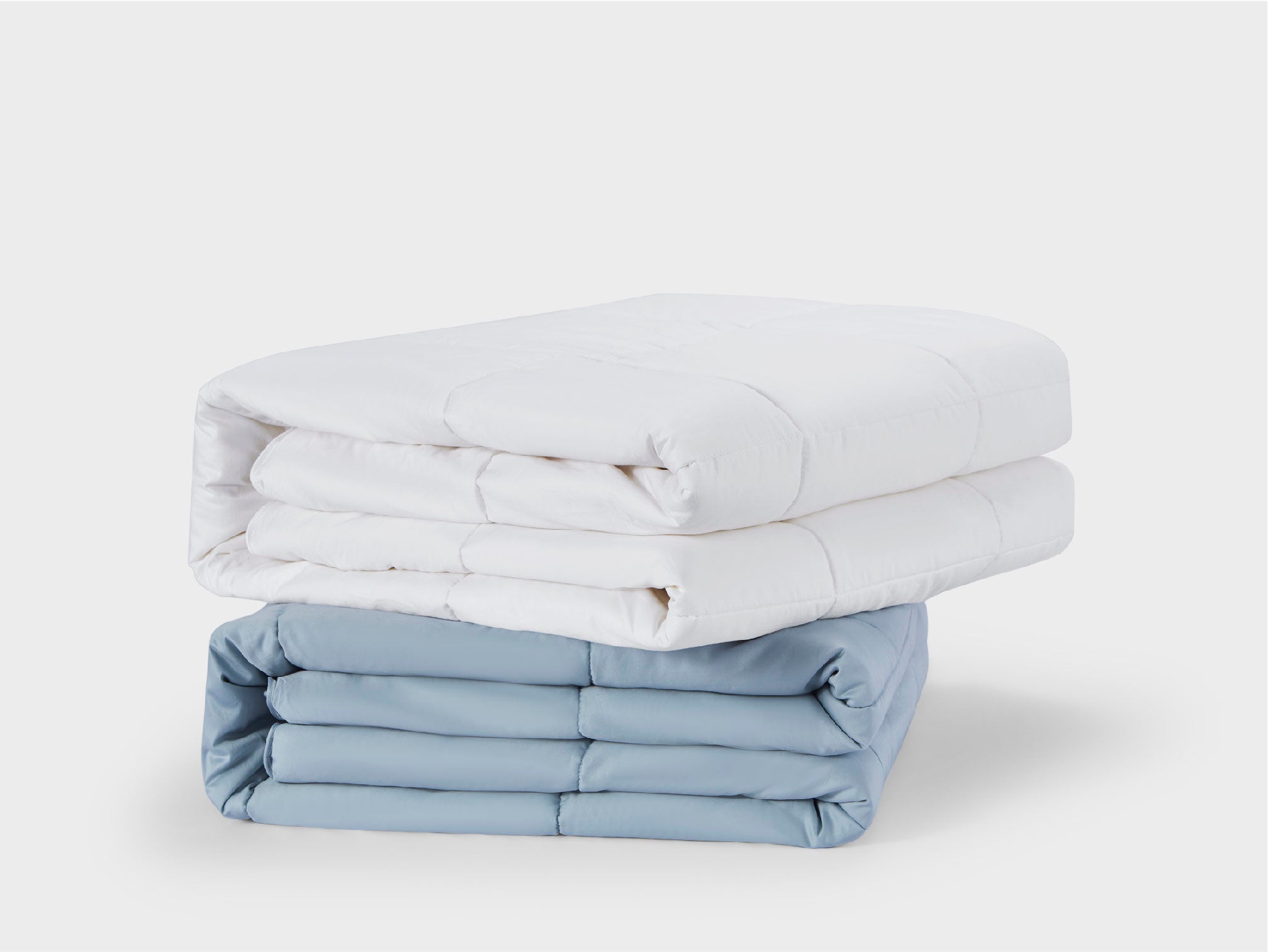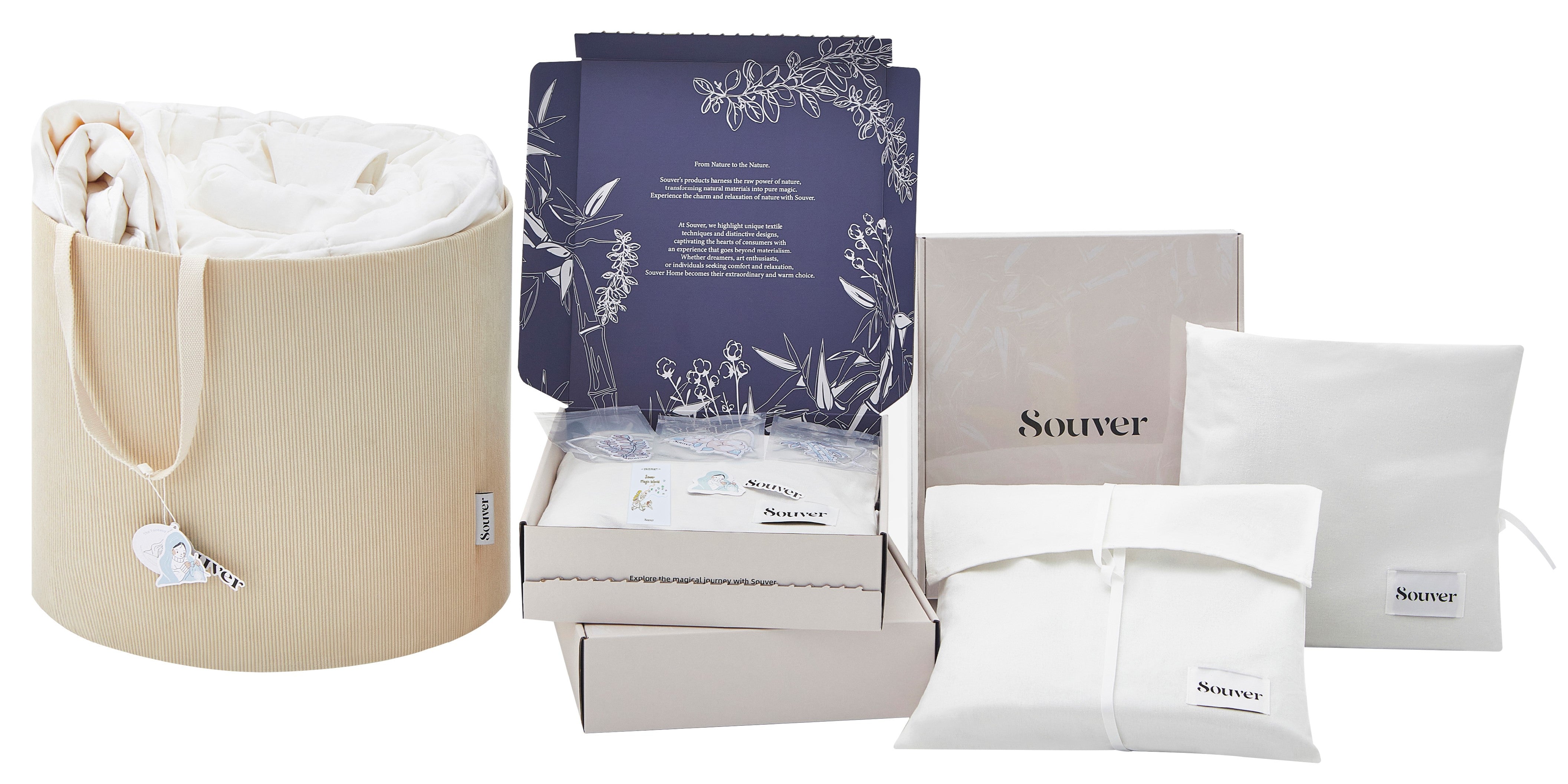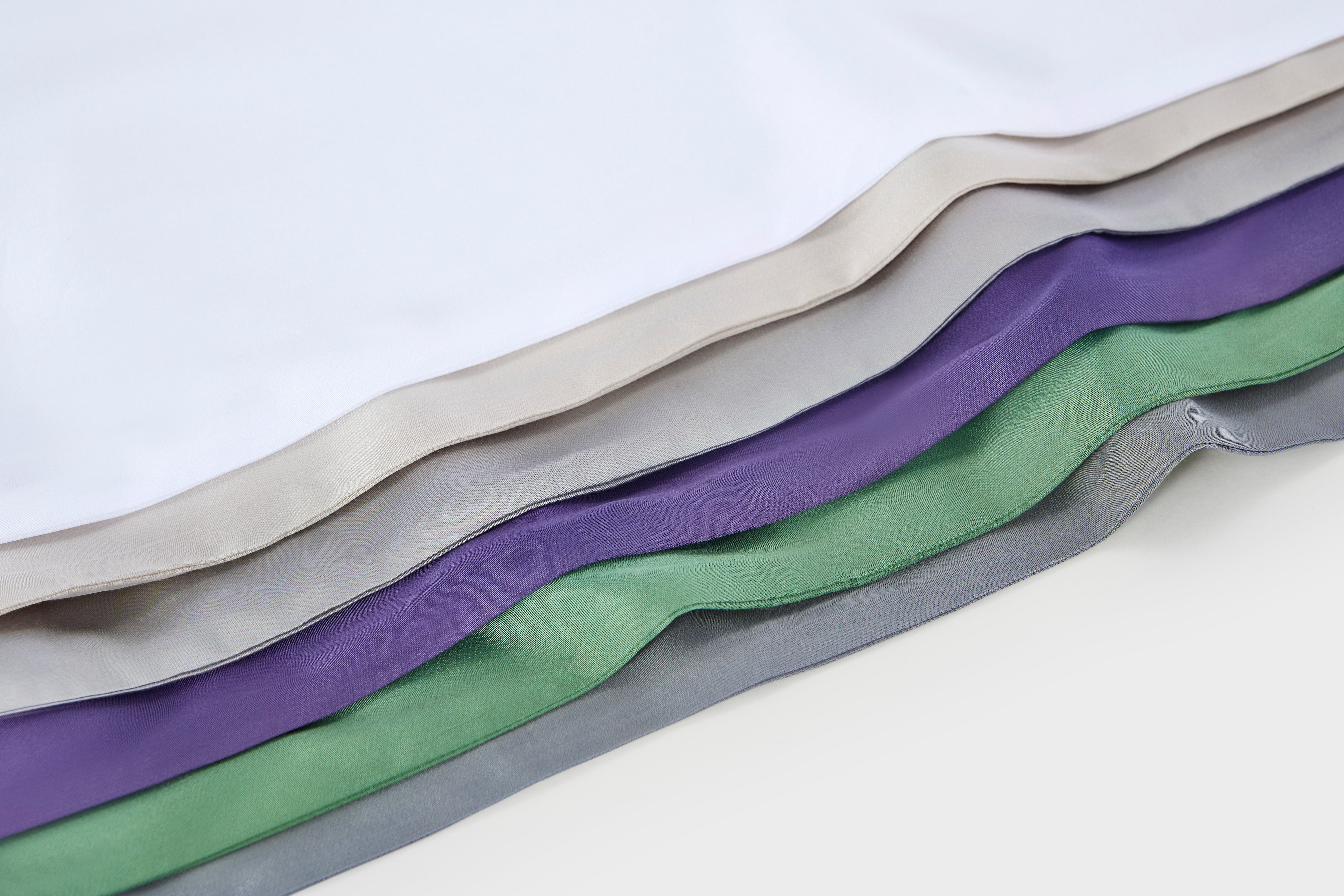Are you tired of expensive dry-cleaning bills for your comforter? Well, you can wash and dry your comforter at home and save some money. Giving your comforter a good wash and dry can also extend its lifespan.
With a few simple tips and tricks, you can learn how to effectively wash and dry your comforter, ensuring it stays fluffy, cozy, and fresh. In this guide, we'll walk you through the steps about how to wash a bed comforter and how to dry it without damaging it.
How to Wash Your Comforter at Home?

Wondering about how to wash a comforter at home? Well, before you start washing your comforter, you need to make sure you can wash your comforter in the washing machine. Comforters made of natural fiber like down and feather are machine washable, but synthetic materials like polyester are dry-clean only.
If your comforter is machine washable, follow these simple steps to wash it at home:
1. Read the Care Instructions
If you use a washing machine to wash your comforter, read the care instructions. If your label says "Dry Clean Only," do not attempt to wash your comforter at home.
However, if it's ok to go for a machine wash, follow the proper instructions, like if you need to use cold water or warm water, which kind of detergent you need to use, and if it can be tumble dried on low heat.
2. Pre-treat Stains
Before placing your comforter in the washer, it's important to tackle any noticeable stains. During the wash cycle, spot cleaning can prevent stains from getting deeper into the fabric. Simply apply a small amount of gentle detergent or a stain remover to the affected area.
Use a soft-bristled brush or a clean cloth to work the cleaning agent into the stain gently. Allow the solution to sit for about 10-15 minutes before proceeding with the wash. This pre-treatment step helps ensure that your comforter looks as good as new. Remember to be gentle to avoid damaging the comforter's material.
3. Load the Washing Machine Properly
When washing a comforter, use a front-loading machine if possible. Top-loading machines can be too harsh on the bedding and may not provide a thorough cleaning. Also, avoid overloading the machine, as this can cause damage to both your comforter and the washer.
Place the comforter in the washing machine and add some gentle detergent. Use cold or warm water, as hot water can damage the comforter's filling.
4. Add Mild Detergent
Use a mild, liquid detergent rather than powder, which can leave residue on the comforter. Add the suggested amount of detergent to the dispenser, being careful not to overdo it, as excess soap can be hard to rinse out and may strip the comforter of its natural softness.
If your comforter is white or light-colored, consider a detergent with a whitening agent to brighten it up. If you've got a high-efficiency washer, ensure the detergent is high-efficiency; these are designed to produce fewer suds and rinse out more easily, ideal for larger items like comforters.
5. Wash on a Gentle Cycle
Select the gentle or delicate cycle on your washing machine, specifically designed to treat your comforter carefully. This setting uses a slower spin and less agitation, reducing the risk of damaging the fibers or bunching up the filling.
If your machine has settings for bulkier items, use that to ensure an even wash. Also, load the machine with a few towels to balance the load and prevent the comforter from getting tangled.
How to Dry Your Comforter at Home?

Drying your comforter at home requires much attention to ensure it is dried properly without causing any damage. You can customize the cycle and temperature settings on your dryer depending on the material of your comforter.
Follow these steps to achieve the perfect dry:
1. Load Your Comforter Into Dryer
After the wash cycle, remove your comforter from the washing machine to maintain its shape. Transfer it to the dryer and ensure it's evenly spread out. This helps to distribute the heat and prevent the filling from clumping evenly.
Add clean tennis balls or dryer balls to the dryer with the comforter. These help to fluff the comforter as it dries, also assisting in breaking any lumps of filling and allowing the heat to circulate more efficiently. Select the low heat setting on your dryer – high heat can damage the fibers and potentially scorch the filling. Tumbling on a low or medium heat cycle is gentle and less likely to shrink the comforter.
2. Let the Comforter Dry Thoroughly
Monitor the drying process by checking the comforter periodically. This is crucial as the thick filling might retain moisture that isn't immediately apparent. Running multiple drying cycles is often necessary to ensure the comforter completely dries throughout.
Pause the dryer every half hour to fluff the comforter manually, breaking up any damp clumps and redistributing the filling; this also allows for better airflow inside the dryer. Be patient and don't rush the process – a properly dried comforter should be completely moisture-free, soft to the touch, and evenly fluffed.
3. Allow Your Comforter to Air Out
Once your comforter is completely dry, please remove it from the dryer and give it a good shake to restore its natural fluffiness. Leave it in a well-ventilated area for a few hours to air any remaining moisture or odors.
Finally, you can put your fresh and clean comforter back on your bed and enjoy a peaceful night's sleep. With these simple steps, you can easily wash and dry your comforter at home without taking it to the dry cleaner every time. Remember to read the care instructions and follow these tips to keep your comforter looking and feeling new for years.
Tips When You Wash Your Comforter
Now that you know how to wash a comforter and dry it, let's go over some important tips to keep in mind for your next laundry day:
- Always read the care label before washing and follow the manufacturer's instructions.
- Use a front-loading machine or large-capacity top-loading machine to avoid damaging your comforter.
- Spot-treat any stains before throwing your comforter into the wash.
- Avoid overloading the machine with cold or warm water with mild detergent instead of hot water.
- Add tennis balls or dryer balls to assist in fluffing and drying the comforter evenly.
- Fluff your comforter manually during the drying cycle to ensure even distribution of filling and prevent clumping.
- Allow your comforter to air out completely before putting it back on your bed.
Following these tips, you can ensure your comforter is properly and safely washed and dried, leaving it soft, clean, and long-lasting.
Common Question of Wash or Dry the Comforter
1. What setting to wash bed sheets?
Most bed sheets can be washed regularly or gently with warm water. However, always check the care instructions to ensure you use the correct settings and temperature for your sheets. Washing sheets separately from other items is also recommended to prevent them from getting tangled or damaged in the machine. Following the manufacturer's instructions when washing any bedding item is important.
2. How to dry sheets?
Sheets can be dried on a low heat setting or hung to air dry. Drying them at a high temperature can cause shrinkage and damage to the fabric. Removing them from the dryer promptly after drying is important to prevent wrinkles from forming. If you hang them, ensure they are evenly spread and not bunched up to avoid wrinkles.
3. Is it better to dry clean or wash a comforter?
Whether to dry, clean, or wash a comforter depends on the comforter's material and the manufacturer's care instructions. Some comforters are suitable for machine washing, while others maintain their quality best when dry cleaned. Always check the labels and follow the recommended care instructions to avoid damaging your comforter.
4. Why should you wash your comforter?
Washing your comforter regularly helps remove dirt, dust, and any stains that may accumulate over time. It also helps to maintain the freshness and fluffiness of the filling, ensuring a comfortable and hygienic sleep experience. Moreover, washing your comforter can extend its lifespan by preventing buildup and potential damage from neglecting regular cleaning.
Click to buy Souverhome's comfortable and easy-care silk duvet, which can be used all year round.
5. Can I put the comforter in the dryer without washing?
It is not recommended to put your comforter in the dryer without washing it first. The heat from the dryer can set any stains or odors, making them harder to remove in the future.
6. How often should comforters be washed?
Comforters should be washed every 3-6 months, depending on the frequency of use and the manufacturer's recommendations. However, if you have allergies or pets that sleep on your bed, washing them more frequently may be necessary to maintain cleanliness and hygiene.
Conclusion
Taking care of your comforter may seem daunting, but with the right know-how, you can easily wash and dry it at home. Always check the care instructions, use gentle settings, and be patient during drying.
With these simple tips, your comforter will stay fresh and cozy for years. So next time you see a stain or notice your comforter losing its fluff, just follow these steps for a hassle-free and thorough cleaning.








留言
此網站已受到 hCaptcha 保護,且適用 hCaptcha 隱私政策以及服務條款。